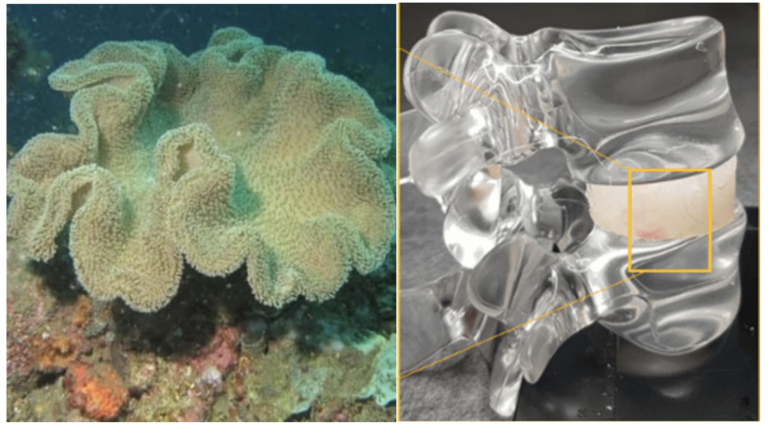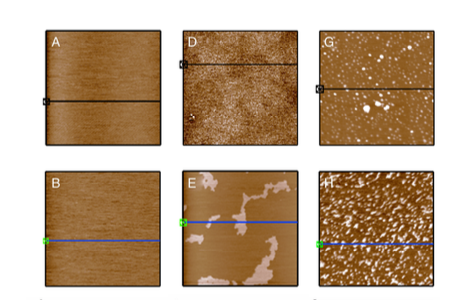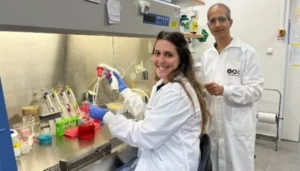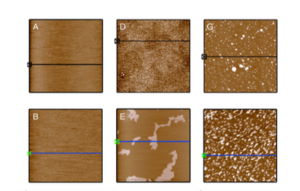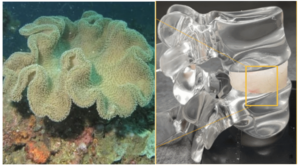BGU : les araignées veuves brunes envahissantes hébergent des bactéries liées à la chlamydia

[:fr]
Des veuves brunes envahissantes réparties sur trois continents ont été fortement infectées par une seule souche de Rhabdochlamydia, une bactérie liée aux principaux agents pathogènes des humains et des animaux, notamment la chlamydia. Cependant, une morsure de ces araignées n’infectera pas les personnes atteintes de chlamydia. Jusqu’à présent, la Rhabdochlamydia n’était trouvée que dans quelques organismes – une tique, un isopode, une blatte et une autre araignée – et même à cette époque, elle était rare dans tous ces organismes.
Le Dr Monica Mowery et ses collègues de l’Université Ben Gourion du Néguev ont comparé les communautés microbiennes des populations d’araignées veuves brunes collectées en Afrique du Sud (l’aire de répartition probable de l’araignée) et les populations envahissantes d’Israël et des États-Unis. La bactérie majoritairement prédominante, Rhabdochlamydia, a été trouvée chez 86 % des araignées interrogées. On l’a également trouvé dans les œufs de l’araignée femelle, ce qui indique que les mères araignées transmettent la bactérie à leur progéniture. « Nos résultats suggèrent que cette bactérie chlamydiale dominante et largement répandue joue un rôle important dans l’araignée veuve brune invasive« , a expliqué le Dr Monica Mowery, professeur adjoint à la City University de New York et ancien chercheur postdoctoral de la BGU.
Caractériser les symbiotes bactériens potentiellement importants et répandus est une étape vers la compréhension de leur pertinence pour les interactions écologiques et les réponses aux changements environnementaux rapides. La forte prévalence de Rhabdochlamydia dans toutes les populations d’araignées testées suggère qu’elle pourrait jouer un rôle fonctionnel important et pourrait contribuer au succès de l’invasion de l’araignée. L’araignée veuve brune, Latrodectus géométrique, est une espèce urbaine envahissante qui surpasse les espèces d’araignées indigènes trouvées dans les climats chauds du monde entier. Ces araignées ont un venin neurotoxique et peuvent être dangereuses pour les jeunes enfants et les personnes âgées. Les associés microbiens peuvent influencer la propagation envahissante et le succès d’une espèce dans un nouvel environnement et peuvent se déplacer ou disparaître au cours du processus d’invasion.
Les veuves brunes sud-africaines présentaient globalement des souches de bactéries plus distinctes que celles arrivées plus récemment en Israël, où les veuves brunes ont été trouvées pour la première fois à Tel Aviv en 1980, et aux États-Unis, où les araignées se sont développées depuis le sud de la Floride dans les années 2000. Cette diversité microbienne plus élevée conforte l’idée selon laquelle l’araignée veuve brune envahissante est originaire d’Afrique australe.
Parmi les autres chercheurs figuraient le Pr Yael Lubin et le professeur Michal Segoli de l’Université Ben Gourion du Néguev, le Pr Jennifer White, le Dr Eric Chapman et Laura Rosenwald de l’Université du Kentucky, Thembile Khoza de l’Institut national sud-africain pour la biodiversité, et Robin Lyle du Conseil de recherche agricole, Afrique du Sud.
Le financement a été fourni par une bourse postdoctorale Zuckerman STEM au Dr Monica Mowery et par une subvention de la National Science Foundation au professeur Jennifer White.
Publication dans Scientific Reports, avril 2024
À propos de l’Université Ben Gourion du Néguev : L’Université Ben Gourion du Néguev exploite le potentiel infini dont nous disposons en tant qu’individus et en tant que communauté pour nous adapter et prospérer dans des environnements changeants. Inspirés par notre emplacement dans le désert, notre objectif est de découvrir, de créer et de développer des solutions à des défis dynamiques, de poser des questions qui n’ont pas encore été posées et de repousser les limites de ce qui est communément accepté et possible. Nous sommes fiers d’être une force centrale pour l’inclusion, la diversité et l’innovation en Israël, et nous nous efforçons d’étendre le potentiel du Néguev et notre esprit d’entreprise à travers le monde. Par exemple, l’École multidisciplinaire sur la durabilité et le changement climatique de BGU s’appuie sur plus de 50 ans d’expertise dans la vie et la prospérité dans le désert pour créer des solutions évolutives pour les gens du monde entier. En un coup d’œil : 20000 étudiants | 800 professeurs seniors 3 campus 6 facultés : sciences humaines & sociales, sciences de la santé, sciences de l’ingénieur, sciences naturelles, commerce & gestion et recherche sur le désert. Nous vous invitons à mettre de côté les paradigmes existants et à voir le monde depuis notre perspective non conventionnelle.
[:en]
Invasive brown widow spiders across three continents were highly infected with a single strain of Rhabdochlamydia, a bacterium that is related to major pathogens of humans and animals, including chlamydia. A bite from these spiders, however, will not infect people with chlamydia. Up until now, Rhabdochlamydia was found in only a few organisms – a tick, an isopod, a cockroach, and one other spider – and even then, was a rare occurrence in all these organisms.
Dr. Monica Mowery and colleagues at Ben-Gurion University of the Negev compared microbial communities in populations of brown widow spiders collected in South Africa (the likely native range of the spider) and invasive populations in Israel and the United States. The overwhelmingly predominant bacteria, Rhabdochlamydia, was found in 86% of spiders surveyed. It was also found in the female spider’s eggs, indicating that mother spiders transmit the bacteria to their offspring.
“Our results suggest that this dominant, widely prevalent chlamydial bacteria has an important role in the invasive brown widow spider,” explained Dr. Monica Mowery, an assistant professor at the City University of New York and a former post-doctoral researcher at BGU.
Characterizing potentially important and widespread bacterial symbionts is a step towards understanding their relevance to ecological interactions and responses to rapid environmental changes. The high prevalence of Rhabdochlamydia in all spider populations tested suggests it may have an important functional role and could contribute to the spider’s invasion success.
The brown widow spider, Latrodectus geometricus, is an urban invasive species that outcompetes native spider species found in warm climates worldwide. These spiders have neurotoxic venom and can be dangerous to young children and the elderly.
Microbial associates can influence a species’ invasive spread and success in a new environment and can shift or be lost during the invasion process. The South African brown widow spiders had overall more distinct strains of bacteria compared to newer arrivals in Israel, where brown widows were first found in Tel Aviv in 1980 and in the United States, where spiders expanded from southern Florida in the 2000s. This higher microbial diversity supports the idea that the invasive brown widow spider originated in southern Africa.
Additional researchers included Prof. Yael Lubin and Prof. Michal Segoli from Ben-Gurion University of the Negev, Prof. Jennifer White, Dr. Eric Chapman, and Laura Rosenwald from the University of Kentucky, Thembile Khoza from the South African National Biodiversity Institute, and Robin Lyle from the Agricultural Research Council, South Africa.
Funding was provided by a Zuckerman STEM Postdoctoral fellowship to Dr. Monica Mowery and by a National Science Foundation grant to Prof. Jennifer White.
About BGU: Ben-Gurion University of the Negev embraces the endless potential we have as individuals and as a commonality to adapt and to thrive in changing environments. Inspired by our location in the desert, we aim to discover, to create, and to develop solutions to dynamic challenges, to pose questions that have yet to be asked, and to push beyond the boundaries of the commonly accepted and possible. We are proud to be a central force for inclusion, diversity and innovation in Israel, and we strive to extend the Negev’s potential and our entrepreneurial spirit throughout the world. For example, the multi-disciplinary School for Sustainability and Climate Change at BGU leverages over 50 years of expertise on living and thriving in the desert into scalable solutions for people everywhere. [:]


